|
|
| Fruit,
Vegetables and Gourds |
Choi Goh |
|
This weird vegetable
is a sort of green root that grows into a large ball
that sits on top of the ground - a bit like a marrow.
Main and ariel roots enter the ground, whilst the leaves
look very similar to celery clumps and with the stalks
are used in a similar way.
Note:
This vegetable is what the Chinese use instead of suede, which is almost unknown in China. The prep, cooking, and combinations of these vegetables are almost identical, so a quick substitution is all expat's need to do.
It is a main ingredient of 'Chow Fan', or Fried Rice when served as a meal in itself.
Most Expats will already have eaten these things without actually knowing what they are. They do not have a predominant taste of their own, and in this respect are similar to fresh, pared cucumber. Their mild and easy taste makes them a
fine companion for other more flavoursome dishes, and they can be used in place of suede, which is not common in China. They are an essential ingredient for sticky rice. |
|
Ordering
This vegetable requires specific intonation in
Cantonese, with 'choi' being simple. 'goh' is
a 'g' as in guttural followed by a seal sound.
Perhaps 'Gotcha' is a good analogy, leaving the
'tcha' bit off - then make it nasal and hollow.
Buying
Purchase ones that have healthy leaves, no drooping.
The bulb can be 6 or more inches in diameter and
should be firm and without blemishes, excepting
those due to organic farming methods of course.
These are more likely to be local produce in wet
markets, or factory farm produced for supermarkets
- go to the wet market for better quality and
prices.
Preparation
Remove any ariel roots and chop off the celery
stem like leaves, putting the latter aside. Peel
the bulb as you would a potatoe, including any
inner material that is not white. This would be
'heavy' peeling. Set aside on the counter top
until ready for use. Next take the stems and wash
them well under the tap. Place on a chopping board
and cut into lengths between 2 and 4 inches long
= up to you. Include the topmost leaves also.
Set these aside with the whole peeled bulb.
|

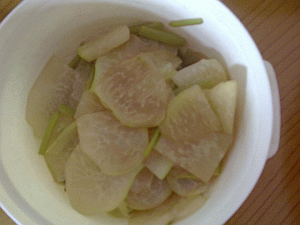
|
|
|
Method
Cook as a standard Cantonese stir fry vegetable:
1. Chop the bulb into discs about 1/8th inch wide and
half if very large. Throw into a heated wok with a cup
of water and bring to a hearty simmer.
2. Add the stalks and leaves, and a pinch of salt.
3. Simmer for 5 minutes, or until the outer flesh is
cooked and easy to eat. A bit like potatoes really.
4. That's it! Serve to table in a suitable dish.
Recipes
We do not have any defined recipes for this vegetable,
although you can always add: some crushed garlic, ginger,
and a teaspoon of chicken bouillon to make a healthy
gravy.
Otherwise Cantonese chefs tend to mix this with other
dishes as a filler - such as soups or Chinese
spare ribs (Not western style). They also work well
in 'Hot Pot' again
a Chinese (Mongolian) invention. |
|
|
This information is as supplied by ourselves, and ably
supported by our friends and various internet portals. |
|
| Search
this Website |
|
|
| Descriptions |

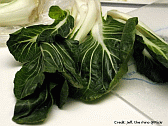
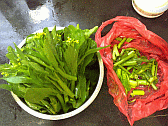
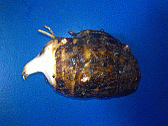
|
| Chinese Recipes |
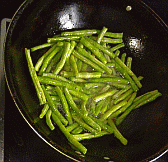

|
|